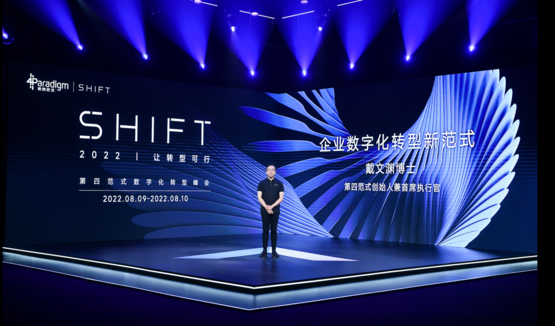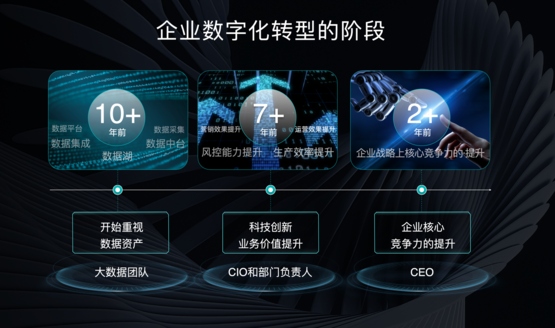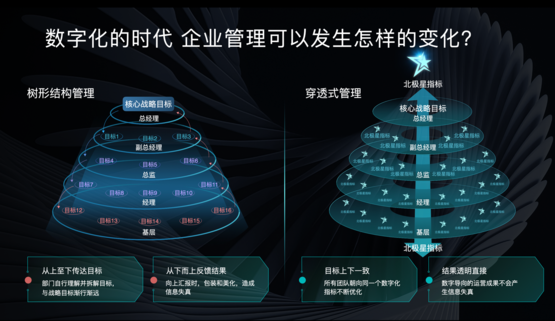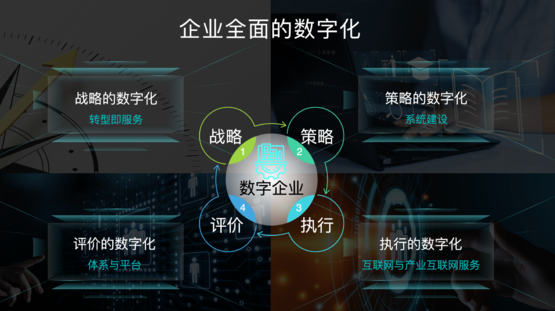From August 9th to 10th, 2022, the first SHIFT Digital Transformation Summit will be held online. The SHIFT Summit is an industry-wide digital transformation thought event founded by 4Paradigm. The chairman and CEO of more than 30 leading companies and nearly 100 corporate executives from different industries conducted wonderful sharing and discussions at the SHIFT Summit.
At present, traditional industries are becoming the protagonists of digital transformation, and digital transformation has also penetrated from data collection to the “deep water area” of business decision-making reform. At the main forum of the SHIFT Summit, 4Paradigm officially released the 4Paradigm Shift enterprise transformation platform and service , which aims to help more and more traditional enterprises to improve their core competitiveness based on digital transformation and become the next generation of enterprises.

Enterprise digital transformation is not a new topic, but at different stages, enterprises have different understandings of digital transformation and different problems to be solved. Dai Wenyuan, founder and CEO of 4Paradigm, said that in the early stage of digital transformation, companies were committed to collecting data through online business; after data accumulation, companies began to seek data that could bring value to their business, and various innovative applications sprang up like mushrooms after a rain. , the Fourth Paradigm has grown up with this wave of trends; in the past two years, companies’ views on digital transformation have changed again, and some companies have begun to think or even question that digital investment has not brought essential changes to the company, and has not changed the company. position in the industry competition.

During the more than seven years of helping enterprises to digitally transform, Fourth Paradigm has found that the most essential reason is that most enterprises do not use digital capabilities to enhance the most important core competitiveness of their enterprises and enable them to compete in the industry. to achieve an absolute competitive advantage and complete a real transformation.
One of the important reasons is because the organizational form of enterprises is not digital. The management of an enterprise usually presents a tree structure, dismantling goals from top to bottom, and summarizing and reporting from bottom to top. With the development of the enterprise and the increase of the reporting level, the deviation between the grass-roots indicators and the strategic objectives of the enterprise will become larger and larger in the process of successively assigning and splitting the goals. When digitization solves only the grassroots execution problems under the traditional management structure, rather than the overall strategic goals of the enterprise, no matter how good the digital construction is, it will not lead to the “qualitative change” of the enterprise itself.
At the same time, in the bottom-up reporting process, there is also a certain degree of explanation, explanation and even beautification and decoration. The information received by managers is often not accurate and objective, which will also affect the quality of key decisions, which is beneficial to the enterprise. development brings greater challenges.
To address the limitations of existing enterprise management models and unlock the true value of digital transformation. The Fourth Paradigm proposes a new mode of digital transformation that combines computer and enterprise management: penetrating management. First, convert the strategic goals of the enterprise into a language that can be recorded and tracked by computers, that is, the North Star indicator of the enterprise, as the core key indicator of the enterprise. Then, the organizational structure of traditional hierarchical management is readjusted and divided into multiple experimental groups that continuously innovate and improve the North Star indicator. Each experimental group continues to innovate towards the same goal. These progresses, no matter how big or small, can be effectively converged, effectively improving the North Star indicator of the enterprise, and the accumulation has changed from quantitative to qualitative.

Specifically, the comprehensive digitalization of enterprises can usually be divided into four parts: strategy, tactics, execution and evaluation . Taking a retail enterprise as an example, the strategy is often the operating ability of the store, which is usually the direction of the investment of enterprise resources. According to the strategy, the store manager formulates the strategy to improve the operating ability of the store, and the clerk implements it. Finally, the decision makers of the enterprise evaluate the strategy and implementation. Whether the improvement of the strategy has really been realized.
If the computer is to complete this closed loop, the first step is to digitize strategies, that is, to translate unquantifiable strategies into quantifiable numbers. Because computers can only understand numbers, for example, computers can’t understand the strategy of users’ favorite apps, but they can understand the retention rate of apps. Enterprises need to determine their own digital north star indicators according to their strategies. For example, banks rely on wealth management product sales to win. The north star indicator is the per capita contribution value of relationship managers. After determining the North Star indicator, and then investing in digital resources in a consistent manner, it is a more effective digital transformation.
The digitization of strategy refers to the use of AI decision-making technology, based on the massive rules and decisions generated by data, to break through the limits of human-made strategies, and make every decision-making effect of the enterprise more accurate.
The digitalization of execution refers to the efficient, batch and real-time distribution and feedback of strategies through the technology of the Internet and the Industrial Internet.
The digitization of evaluation means that on the basis of establishing an iterative “squad” oriented to the North Star index, the enterprise can objectively obtain the contribution to the North Star index for each experiment and strategy, and gather the improved strategies to continuously improve the business. baseline. The huge workload of evaluating each experiment and strategy also needs the support of a strong digital system.

To achieve real transformation goals in the digital age, enterprises need to use new digital systems and platforms to support the construction of a penetrating management model. 4Paradigm officially released the 4Paradigm Shift enterprise transformation platform and services at the SHIFT Summit, bringing end-to-end, comprehensive digital transformation construction and services to enterprises. Based on the 4Paradigm Shift enterprise transformation platform, enterprises can unify the goals of each level into a unique North Star index and issue them smoothly. Employees can quickly verify the experimental strategy on the experimental platform around the North Star index, and the management can objectively evaluate the experimental results of employees on the index. contribute. Based on the 4Paradigm Shift enterprise transformation service, enterprises can customize the Polaris index system and transformation plan that conform to their core competitiveness.

The digital transformation of enterprises, from the construction of big data, to the pilot of business innovation, and today, the industry generally believes that it has entered the deep water area of enterprise transformation, and begins to reconstruct the core competitiveness of enterprises. Transformation means huge investment and uncertainty, and there is also the possibility of failure. Under the traction of the North Star indicator, it can help enterprises to accumulate their own core capabilities in every step of the transformation, and then add a digital management system from strategy, strategy, execution to evaluation to drive every tiny improvement, accumulate quantitative changes, and finally make qualitative changes. occur.
This article is reproduced from: http://www.guokr.com/article/461967/
This site is for inclusion only, and the copyright belongs to the original author.